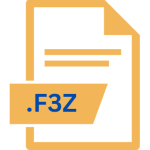.DL_ File Extension

Compressed DLL File
| Developer | Microsoft |
| Popularity | |
| Category | Compressed Files |
| Format | .DL_ |
| Cross Platform | Update Soon |
What is an DL_ file?
The .DL_ file extension signifies a compressed Dynamic Link Library (DLL) file. These files are primarily used in Windows operating systems and play a crucial role in software development and system operations.
DLL files contain code, data, and resources that various programs can use, which helps in modularizing and reusing code efficiently.
The .DL_ extension indicates that the file is a compressed version of a DLL, commonly used to save space and simplify file distribution.
More Information.
Historically, the use of .DL_ files dates back to the era when floppy disks were a primary medium for software distribution.
During this time, storage space was at a premium, and compression techniques were critical for fitting larger applications onto fewer disks.
The .DL_ file extension was used to compress DLL files to reduce their size, making it easier to distribute software via multiple floppy disks.
In the context of software installation, .DL_ files would be unpacked and expanded into their original .DLL format.
This process ensured that the necessary libraries were available in their uncompressed form for the operating system and applications to utilize.
Origin Of This File.
The .DL_ extension originates from Microsoft’s early operating systems, particularly Windows 3.x, where it was employed as part of the installation and setup processes.
The suffix _ denotes that the file is a compressed version of the standard .DLL file. This compression was part of Microsoft’s strategy to manage limited disk space and improve the efficiency of software distribution.
File Structure Technical Specification.
A .DL_ file is essentially a compressed version of a DLL file, which means it retains the basic structure and content of a DLL but in a reduced size. The structure of the original .DLL file includes:
- Header: Contains information about the DLL such as its version, the architecture it supports, and the entry points for functions.
- Code Section: This section holds the executable code that the DLL provides to other applications.
- Data Section: Stores global variables and static data used by the DLL.
- Resource Section: Includes resources such as icons, dialogs, and menus.
- Import and Export Tables: Lists functions and data that the DLL imports from or exports to other modules.
When a DLL file is compressed to a .DL_ format, the file structure remains the same, but the contents are compressed using standard compression algorithms.
This compression reduces the file size, which can be crucial for software distribution, especially in the early days of computing.
How to Convert the File?
To convert a .DL_ file to its original .DLL format, follow these steps:
1. Identify the Compression Tool: Determine the compression tool used to create the .DL_ file. For older .DL_ files, this is typically an internal Windows utility.
2. Use Decompression Utility: Use the appropriate decompression utility to extract the .DLL file. In many cases, the command-line tool expand.exe can be used.
- Open Command Prompt.
- Navigate to the directory containing the .DL_ file.
- Execute the command:
expand filename.DL_ filename.DLL
3. Verify Extraction: Ensure that the extracted file has the correct .DLL extension and is in the expected format.
Advantages And Disadvantages.
Advantages:
- Reduced File Size: The primary benefit of the
.DL_file format is the reduction in file size due to compression. This is particularly useful for software distribution on physical media like floppy disks. - Efficient Storage: Smaller files take up less storage space, which is advantageous for both developers and end-users.
- Faster Transmission: Smaller files are quicker to transmit over networks, which can speed up software downloads and updates.
Disadvantages:
- Need for Decompression:
.DL_files must be decompressed before they can be used. This adds an extra step in the installation process. - Compatibility Issues: Modern systems and software often do not recognize the .DL_ extension, making it less relevant in contemporary environments.
- Limited Use Today: With advances in storage technology and the decline of floppy disk usage, the .DL_ file format has become largely obsolete, with modern software distributions favoring other methods.
How to Open DL_?
Open In Windows
- Identify the Source Application: Determine which application or download manager created the ‘.DL_’ file.
- Use the Original Software: Open the application or download manager to resume or complete the process associated with the ‘.DL_’ file.
- Check File Location: If the file is part of a larger process, ensure that it is in the correct directory and that the application can access it.
Open In Linux
- Identify the Application: Determine which software or command generated the ‘.DL_’ file.
- Complete the Process: Use the relevant application or tool to finish the download or process associated with the file.
- Check File Status: Ensure the file is complete and properly formatted before accessing it.
Open In MAC
- Locate the File: Use Finder to navigate to the location of the ‘.DL_’ file.
- Resume the Download: If applicable, open the application or download manager that created the file and resume the download.
- Verify File Completion: Check that the file is fully processed before attempting to use or open it.













